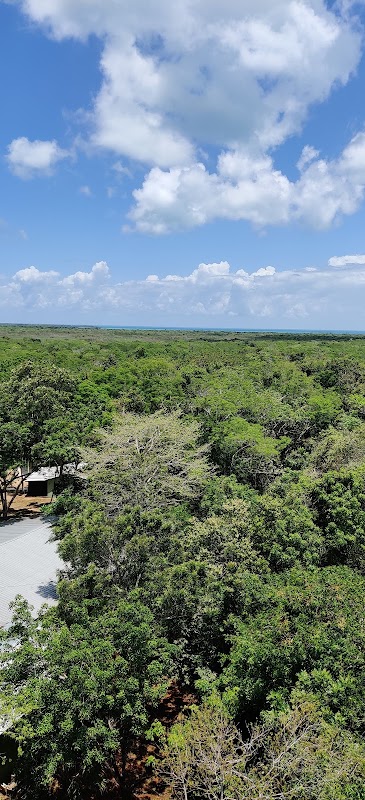Into the Abyss: Snorkeling and Diving the Great Blue Hole of Belize
Venture into the heart of marine wonder at Belize’s Great Blue Hole, a stunning UNESCO site offering unforgettable snorkeling and diving experiences. Discover crystal-clear waters, ancient underwater caves, and vibrant reef life just a short trip from San Pedro.
Book a Certified Dive Operator
Choose operators with full certification and good safety records to ensure expert guidance and equipment standards.
Prepare for Open Water Conditions
The boat ride can be rough; seasickness medication and securing loose gear are recommended before departure.
Hydrate and Protect Against the Sun
The sun is intense on the water; bring sunscreen, a hat for the boat ride, and drink plenty of water before and after your dive.
Confirm Your Dive Certification Level
The Blue Hole demands advanced diving skills; ensure your certification matches the depth and complexity of the site.
Into the Abyss: Snorkeling and Diving the Great Blue Hole of Belize
The Great Blue Hole, located just off the coast of San Pedro, Belize, is a natural marvel demanding both respect and curiosity. This vast marine sinkhole, formed during past glacial periods, plunges over 300 meters deep, inviting snorkelers and divers alike to explore its strikingly clear blue waters and remarkable underwater formations. The experience unfolds with the ocean current nudging you gently as you descend into an ancient world where light and shadow play across towering stalactites and deep caves, remnants of a time when this was a dry cave system.
Departing from San Pedro, a vibrant island town alive with colors and chatter, trips to the Blue Hole last about 2 to 3 hours, including a boat ride across the turquoise Caribbean Sea. The journey itself is part of the thrill, with the sea daring you forward under a sweeping sky. Whether you snorkel the rim or dive into the abyss, the waters teem with vibrant coral reefs, schools of Caribbean reef sharks, and curious groupers. Visibility ranges between 80 to 130 feet, giving a stunning clarity that’s ideal for vivid underwater photography and keen observation.
Practical preparation is crucial. The boat rides can be choppy, and the sun on the open water is relentless—pack sunscreen, hydrate well, and secure your gear rigorously. Divers should be certified and comfortable with deep dives; the Blue Hole is not a beginner spot. Advanced advanced open water skills are required, with proper briefing on safety procedures and buddy systems a must. Snorkelers will mainly explore the perimeter, where coral gardens and rich marine life unfold beneath the surface without the steep drop-offs.
The Blue Hole stands fiercely on its own terms: an ancient, quiet force beneath an inviting surface. Respect for currents, weather shifts, and dive protocols ensures this adventure remains thrilling but safe. The professionals guiding the trips not only navigate the waters but narrate the story of this UNESCO World Heritage Site, from geological origins to ongoing conservation efforts.
In essence, a visit to the Great Blue Hole is more than just a swim or dive — it’s an encounter with an elemental giant, a glimpse into Earth’s deeply carved past, and a call to preserve one of Cayman’s most striking underwater landscapes. For those ready to take the plunge, this experience combines visceral excitement with the rare privilege of witnessing nature’s fierce artistry beneath the waves.
Nearby Trips
All Adventures
Boat Charters
Water Activities
Adventures near San Pedro
Discover the unique and memorable adventures that make San Pedro special.
Frequently Asked Questions
Can beginners dive or snorkel in the Great Blue Hole?
Beginners are not recommended to dive inside the Blue Hole due to its depth and underwater cave formations. However, snorkeling around the rim is safe and accessible for most experience levels.
How do I get to the Great Blue Hole from San Pedro?
Most tours depart early morning on boats from San Pedro’s docks. The boat ride takes about 1.5 to 2 hours, crossing clear Caribbean waters to reach the Blue Hole.
What marine life might I see during the dive?
Divers and snorkelers can expect to encounter Caribbean reef sharks, giant groupers, parrotfish, and various tropical corals thriving on the Blue Hole's outer edges.
Is it safe to dive in the Blue Hole without a guide?
No, diving in the Blue Hole requires a certified guide due to its depth, strong currents, and complex cave systems.
What is the best time of day for diving or snorkeling?
Morning dives are preferred for calmer seas and maximum visibility, with light piercing the water at angles that illuminate the underwater formations vividly.
Are there any environmental protections in place at the Great Blue Hole?
Yes, the site is part of the Belize Barrier Reef Reserve System UNESCO World Heritage Site, with strict rules to protect coral health and marine life from damage and over-tourism.
Recommended Gear
Advanced Diving Certification Card
Proof of certification is mandatory for diving, especially in deep and cavernous sites like the Blue Hole.
Snorkel Gear with Mask and Fins
High-quality mask and fins improve visibility and control for a better snorkeling experience around the Blue Hole’s rim.
Sunscreen with High SPF
Protects skin from intense Caribbean sun exposure during boat trips and surface intervals.
Drinking Water Bottle
Hydration is critical before and after dives to combat sun exposure and physical exertion.
Local Insights
Hidden Gems
- "The Half Moon Caye Lighthouse reef, a smaller dive site nearby with diverse coral landscapes"
- "Viewing the magnificent stalactites inside the walls of the Blue Hole, which tell its geological history"
Wildlife
- "Caribbean reef sharks circling the outer rim"
- "Loggerhead turtles occasionally spotted during snorkeling trips"
- "Schooling jacks and colorful tropical fish dominate the coral gardens"
History
"The Great Blue Hole was first popularized by Jacques Cousteau in the 1970s after establishing it as a prime dive site and contributing to Belize’s stewardship efforts."

